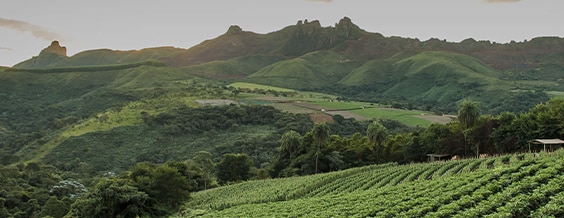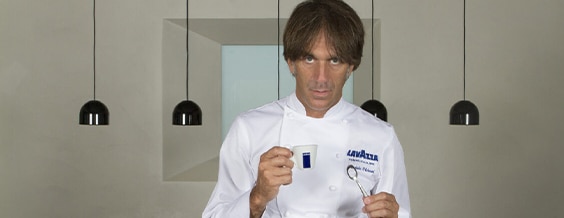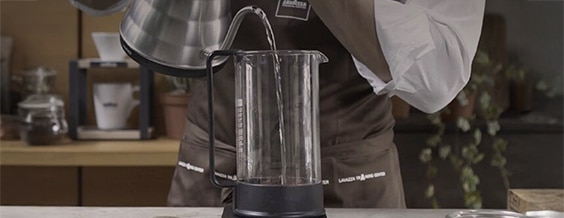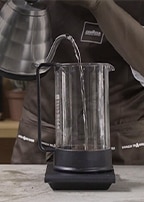When it comes to carbon neutrality, our Group’s approach starts with reducing emissions along Lavazza’s entire value chain, from the cultivation of the coffee right to the end of the cycle, through all the intermediate phases. Since it is clear to us that all emissions cannot be avoided, Lavazza has undertaken a path towards the offsetting of residual carbon emissions where a reduction is not possible. In 2020, we began our journey by offsetting direct emissions and reaching total emissions neutrality for the Group’s offices and manufacturing plants. In terms of products, the Lavazza A Modo Mio coffee capsules, the Lavazza coffee capsules compatible with Nespresso* Original systems, the Firma Coffee System by Lavazza and the Blue Coffee System by Lavazza were among the first Lavazza products to have their CO₂ emissions entirely offset (when we say “CO₂”, we mean CO₂ EQUIVALENT, so we are calculating and offsetting all the greenhouse gas emissions, converted into CO₂). This means that we offset all our yearly carbon emissions in relation to the volume of coffee capsules produced and placed on the market. In 2025, we continue to offset the emissions generated by our single serve products bearing a claim of CO2 offset.
*Lavazza is not affiliated with, approved by or sponsored by Nespresso.
Since climate change is a global problem, the impact of a tonne of carbon emitted from some part of the world can be neutralised by reducing or capturing a tonne of carbon somewhere else; this is the principle of carbon offsetting (also called CO₂ offsetting).
This removal (or sequestration) of carbon is achieved through special projects, very often ones that take place in developing countries.
The projects generate carbon credits, where one credit equals a one-ton reduction or sequestration of CO₂ emissions. The generation of credits is verified and certified following internationally recognised standards and methods.
In addition to the sequestration of carbon, the projects can also provide other environmental, social and economic benefits, such as biodiversity conservation, increased employment for local communities, and assistance with education and healthcare. Supporting these projects is a way of improving local livelihoods, while tackling climate change and reaching the United Nations’ Sustainable Development Goals.
This strategy is consistent with the Lavazza Group’s commitment to complying with the United Nations’ Sustainable Development Goals, in particular by achieving the aims of SDG number 12 (responsible consumption and production) and 13 (combat climate change).
Specifically, the offsetting projects look to reduce or sequester carbon emissions. For every tonne of CO₂ reduced or sequestered, one carbon credit is generated.
The actual reduction (or sequestering) of emissions is measured using rigorous calculation methods and verified by third parties. After this verification process, the carbon credits are released on the market and are available on an international electronic registry. All the offsetting operations are, therefore, traced and publicly available. Once used for the purpose of offsetting, the credits are cancelled (“withdrawn”) to avoid double-counting.
Our approach to completely offsetting CO₂ emissions for these products includes offsetting emissions throughout the entire product life cycle, from coffee cultivation to the end of its life, through all production, transport and disposal phases.
This includes the harvesting of raw materials, production, packaging, the various stages of transport and finally the usage and disposal phase.
Our approach in fully offsetting CO₂ emissions is entirely voluntary.
This approach is consistent with the Lavazza Group’s commitment to complying with the United Nations’ Sustainable Development Goals, in particular by achieving the aims of SDG number 12 (responsible consumption and production) and 13 (combat climate change).
For 125 years, Lavazza’s approach to business has been based on the synergy between our value system and robust economics, as evidenced by our enormous commitment to issues of sustainability. Over the course of time, this synergy has transformed into a strategic pathway of product and process innovation and impact reduction, aimed at the ever greater integration of sustainability into our business model, in keeping with the commitment brought about by our adherence to the United Nations’ Sustainable Development Goals, in particular SDG number 12 (responsible consumption and production) and 13 (combat climate change).
We have recently decided to step up this commitment, in the light of the worsening climate emergency. It should be noted that coffee is an agricultural product that grows in some of the areas of the planet which are at greatest risk from climate change, resulting in disturbances with significant and direct consequences for coffee producers and their families, as well as for coffee production, productivity and quality.
Most of the offsetting projects that exist today are located in developing countries. The social benefits of these projects provide a significant positive impact for the communities in which they are implemented. Discover our projects on www.lavazzagroup.com
The offsetting projects look to reduce or sequester carbon emissions. For every tonne of CO₂ reduced or sequestered, one carbon credit is generated. The credit generation calculation is verified and certified following internationally recognised standards and methods. After this verification process, the carbon credits are released on the market and tracked on international electronic registries. Once used for the purpose of offsetting, the credits are cancelled (“withdrawn”) to avoid double-counting. All the offsetting operations are, therefore, traced and publicly available.









